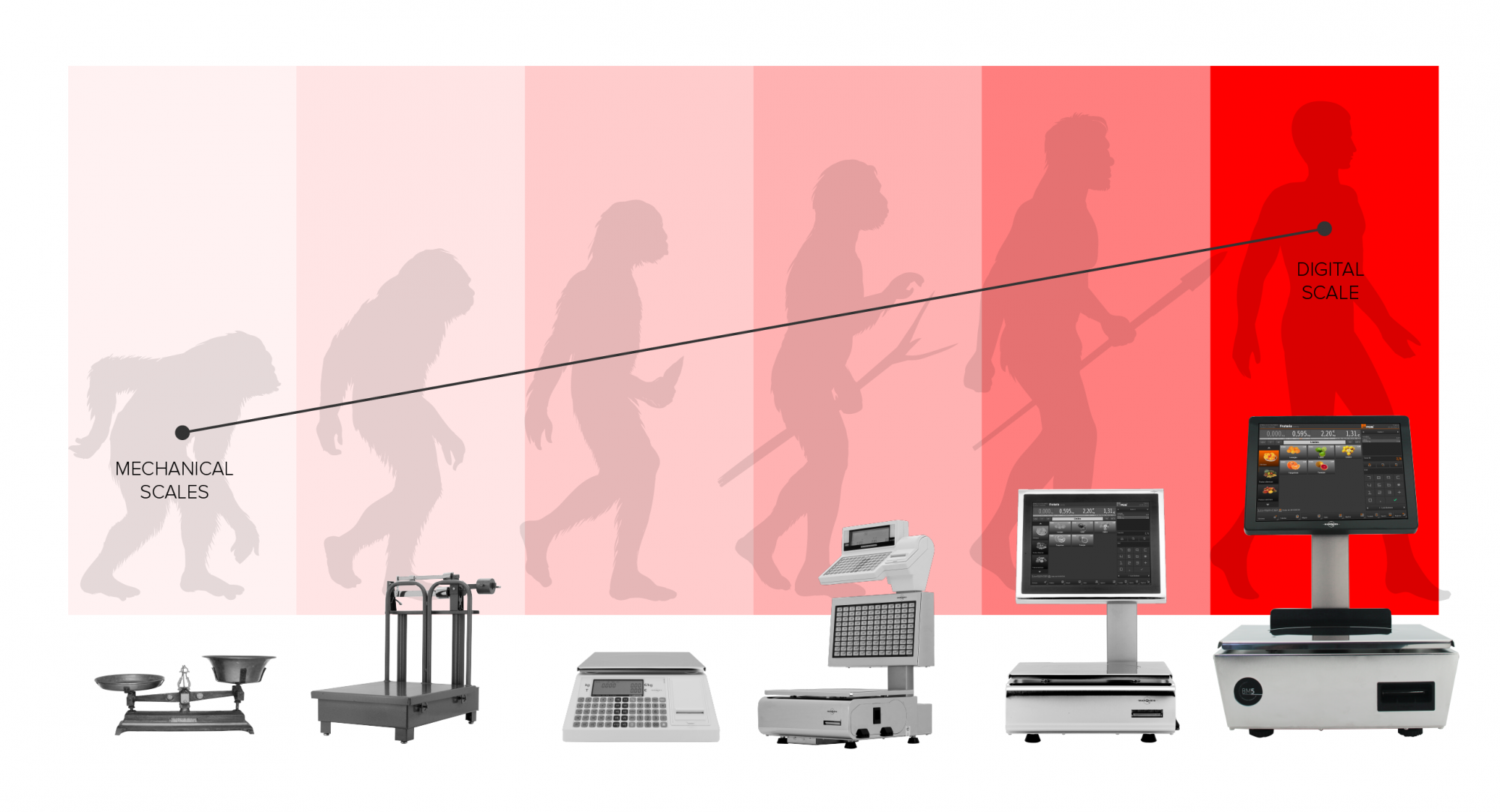
It’s dedicated to the Research and Development of Software for retail and industry. Created and joined in the Group in 2010.
Know more
Acquisition in 2004 of the entire share capital of EUROPESAGEM - Comércio Internacional de Balanças, Lda, a company specialized in the distribution of commercial and industrial weighing equipment (Founded in 2001).
Know more
Official representative of the German brand ESPERA, of weighing and labeling equipment. Created in 2011.
Know moreFrom simple instruments, with two plates, that served only the purpose to weigh in relative terms, scales have evolved to highly precise technological equipment that go way beyond weighing. Let’s learn about the history of scales through the centuries!
Scales are part of our lives since the first moment. They’re also part of Human History and the first big civilizations. Through the centuries, with technological evolution and every new discovery, scales have been transforming and evolved, taking new forms and functions until they turned into the equipment we know today.
How were the first scales?
The first scales were simple instruments. They had a beam with an axis in the middle and in each tip a plate. A standard weight was put in one of the plates, and the object to measure in the other plate. When the beam was balanced, the weight of the object was determined.
It is not possible to specify when they appeared. The oldest artifact of a scale (and the oldest artifact ever found) dated about 2000 BC and was discovered in the Indo River Valley, in Asia, but it is believed that its origin goes back about 5000 BC.
In Ancient Egypt the typical scales with two plates were already used. Although they have not made it to our days, are represented in many engravings of that time.
Such as nowadays, scales were widely used in economic activities, especially to trade and sell goods, as agricultural products and even gold.
How have scales evolved after that?
Later, already under the domain of the Roman Empire, the use of so-called “roman scales” spread. They were hanged at a hook in a fixed point and had two arms with different lengths. In the shorter arm was placed the object to be measured, and in the longest, with units of measurement marks, was a weight that runs in both directions until it finds the balanced point.
A bit more precise than the first scales, the roman scales still depended on other masses to weigh objects. However, alongside the scales with two plates, they continued to be widely used throughout the centuries.
With one or another invention and some adjustments that did not had a massive use, scales only knew a bigger evolution in the XVIII century, during the Industrial Revolution when new forms of weighing without the need of mass weights have emerged.
How did we go from mechanical scales to the digital scales we have today?
Used throughout thousands of years, these mechanical scales have evolved to the digital scales we have today. With several forms and functions, they are currently more complex equipment, that turn a physical stimulus in a digital sign to measure the weight in a practical and rigorous way, based on well-defined measurement units.
They are the result of several years of work and technological development, but also the human needs and evolution of the economic activities. Digital scales appeared in the post-World War 2 so that it was possible to weigh objects in a more reliable way using cheaper equipment.
In the following decades, this kind of scales evolved and improved continuously. Today, they have touch screens, they are equipped with software, they can also serve as POS and can even connect to other devices (such as smartphones) through Wi-Fi. They’ve become mandatory presence in retail businesses and even in our homes.
In the future, scales will continue to evolve to meet the needs and follow the technological development. And, just as in the last 50 years, Balanças Marques will continue to testify the process and, above all, it will be contributing to that evolution!
